Heating and cooling are big expenses in the average home, though which one does the most damage to your budget will depend where you live. If you’re in an area with cold winters, for example, you’ll definitely want to take every step you can to minimize your heating bills while still keeping the house (and yourself) toasty warm. Here are a few of our favorite money-saving ideas.
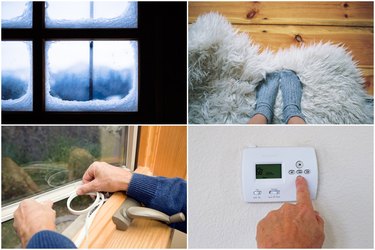
Video of the Day
1. Put Down Rugs
Tile and hardwood floors are always in style, giving your home a clean and minimalist look that goes with almost any decorative theme. Unfortunately those clean, beautiful floors can feel pretty chilly on your feet in winter, which can make you reach for the thermostat. If you don’t have in-floor heating, that means winter is a good time to reach for the rugs. They’ll keep your feet warmer (which makes you feel warmer) and could potentially lessen any loss of heat to the basement or crawl space. Rugs are also an inexpensive way to decorate, potentially adding a pop of cheery color to a grey and dreary season.

2. Use a Window Insulating Kit
Windows are one of the biggest culprits in heat loss, and some are definitely worse than others. If you’re seeing actual frost on the inside of your windows, for example, they definitely need help. One of the lowest-cost options is to insulate them from the inside with plastic. The inexpensive sheet of plastic simply mounts to the window frame with double-sided tape, and then you shrink it into place with a heat gun or hair dryer. Their only major downside is that you can’t open the shrink-wrapped window until springtime.
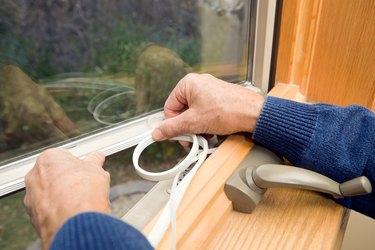
3. Make Your Window Coverings Work For You
If covering your window with plastic doesn’t appeal to you, or if your windows aren’t that bad, you can turn to your window coverings to get the job done. Heavy drapes, or blinds mounted to the inside of the window frame, can do a surprisingly good job of trapping cold air and drafts at the window and keeping them from the rest of the room. Then, open the drapes or blinds while the sun hits that room’s windows, and you’ll enjoy the luxury of free heat from the sun. As a bonus, that flood of natural light acts as a mood booster and helps keep your outlook positive.
 Blinds or heavy curtains can keep out the cold, or let in the sunshine. Image Credit: MediaProduction/E+/GettyImages
Blinds or heavy curtains can keep out the cold, or let in the sunshine. Image Credit: MediaProduction/E+/GettyImages
4. Move Furniture From the Vents
Getting your rooms arranged just the way you want them can be a drawn-out process of trial and error, and the location of heating vents and baseboards was probably not the biggest thing on your mind when you arranged your furniture. Unfortunately, that means some of your biggest pieces — couches, recliners, beds, dressers and wardrobes, for example — may be blocking the flow of warm air through your home. Do a quick check to see how your furniture and heat sources relate to each other. If you’ve got cold rooms and over-heated furniture, switching some pieces around will help a lot.
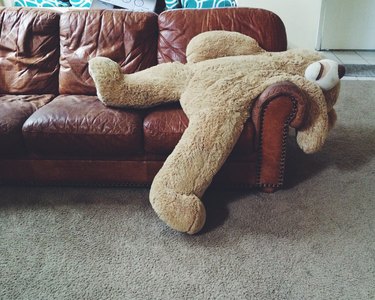 Bulky furniture can soak up a surprising amount of heat if it’s too close to your vents. Image Credit: benhood/RooM/GettyImages
Bulky furniture can soak up a surprising amount of heat if it’s too close to your vents. Image Credit: benhood/RooM/GettyImages
5. Do a Thorough “Draft Patrol”
Does your place feel drafty in the winter? That’s a big red flag: If drafts are getting in, heat is getting out. Before the weather gets cold, pick a blustery day and do a careful check of all the windows and doors in your house to find where and how the drafts are getting in. Where you find drafts, caulk the window frames or take down their surrounding moldings and apply expanding-foam insulation. Do the same at doors, if drafts seem to be coming through the moldings, and visit your local hardware store for draft-blocking strips for any gaps at the bottom of the doors.

6. Cover That Fireplace
Nothing feels cozier than a crackling fire on a cold night, but the blunt truth is that traditional open-hearth fireplaces are lousy at warming your house. In fact, they’re downright counter-productive: Most of them draw (warm) air from your room to fuel the flames, meaning your house will draw in (cold) air from the outside to replace it. It’s also a major contributor to heat loss when it’s not in use, because the chimney is designed specifically to draw warm air from the house. Blocking the hearth with a decorative, insulated cover is your best bet to stop heat loss. If you’re emotionally wedded to having a fire, consider getting an airtight wood- or gas-burning insert.
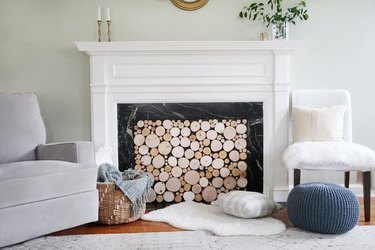
7. Upgrade to Programmable Thermostats
Okay, this one falls a bit outside the “simple home hack” category, but programmable and “smart” thermostats can be a big money-saver in the longer term. It’s simple logic: Turn down the temperature by a few degrees overnight, or in rooms you’re not using, and then program it to come back up to your normal temperature setting before you use the room again. Just remember to keep it to a few degrees. If you turn the temperature down too far, bringing it back up to normal might cost you more than just maintaining the same temperature all the time.
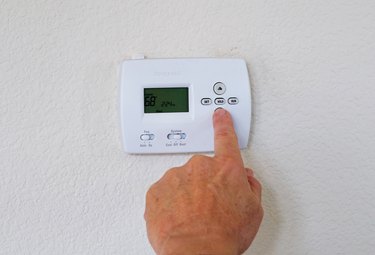 Programmable and “smart” thermostats can help you minimize your overall heat usage. Image Credit: Chantelle Luthy / EyeEm/EyeEm/GettyImages
Programmable and “smart” thermostats can help you minimize your overall heat usage. Image Credit: Chantelle Luthy / EyeEm/EyeEm/GettyImages
8. Warm Yourself
Turning up the thermostat is a natural response when you feel cold, but feeling cold isn’t always the same as being cold. If you find yourself sometimes goosing the heat upward even though the thermostat was already at its usual temperature, the smart thing is to warm yourself instead of the house. Pull on a pair of fluffy slippers and grab a sweatshirt, or if it’s time for cozying up on the couch — because “chilling” is for summer — set yourself up with a warm blanket, a heating pad or hot water bottle, and maybe a mug of something warm and comforting. It’s not the house that feels cold, after all, so why throw money at it?
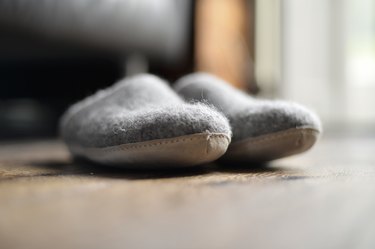 Fluffy slippers, warm sweaters and a mug of something comforting help a lot. Image Credit: robert reader/Moment/GettyImages
Fluffy slippers, warm sweaters and a mug of something comforting help a lot. Image Credit: robert reader/Moment/GettyImages
9. Get Some Baking Done
Remember all those days in summer when it was too hot to bake or cook? Well, winter is when Mother Nature offers some even-up. Let’s be clear, running the oven just to warm the house isn’t cost-effective, but getting the warmth plus baked goods you’d otherwise buy puts you ahead of the game. Whether you’re making cookies for the holidays, experimenting with sourdough or just cranking out an unglamorous casserole for dinner, this is the time of year to have the oven on (and fill your house with good, comforting smells, as well).
 Every time you bake, you’re warming your house. Image Credit: mikroman6/Moment/GettyImages
Every time you bake, you’re warming your house. Image Credit: mikroman6/Moment/GettyImages
10. Get Your Furnace Serviced
Your heating system is like any other piece of equipment: If you want trouble-free service (and who doesn’t?) it needs to be properly maintained. Forced-air systems will need their filters cleaned or replaced and their ducts cleaned; gas- or oil-fired systems should have their nozzles checked, cleaned and adjusted; electric baseboards should be vacuumed; and hot water baseboards or radiators should be “bled” to remove any air from the water lines. You’ll pay a little for these routine maintenance tasks, but you’ll make it back in lower bills and the potentially extended lifespan of your HVAC system.
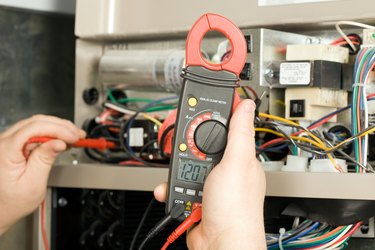 Like any other piece of equipment, your heating system benefits from regular maintenance. Image Credit: BanksPhotos/E+/GettyImages
Like any other piece of equipment, your heating system benefits from regular maintenance. Image Credit: BanksPhotos/E+/GettyImages



























